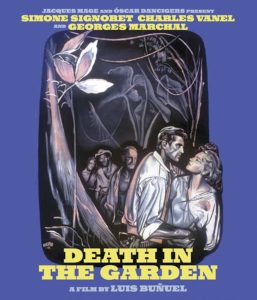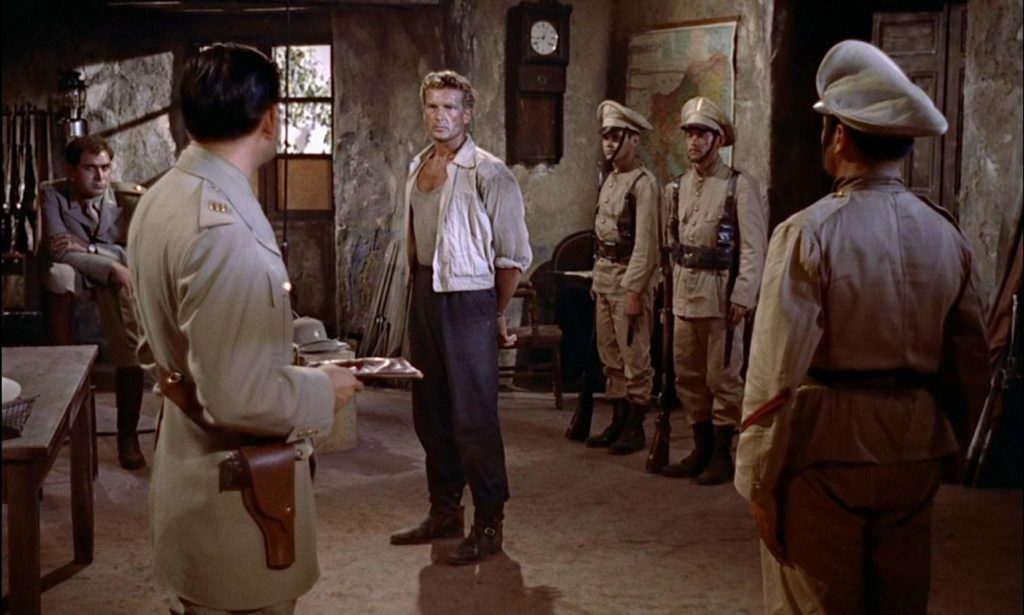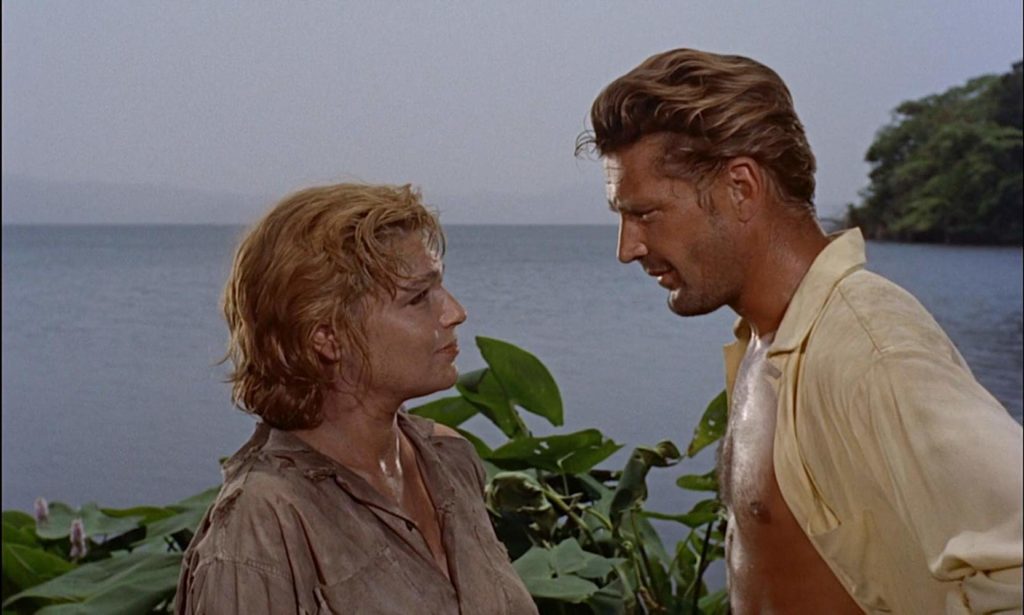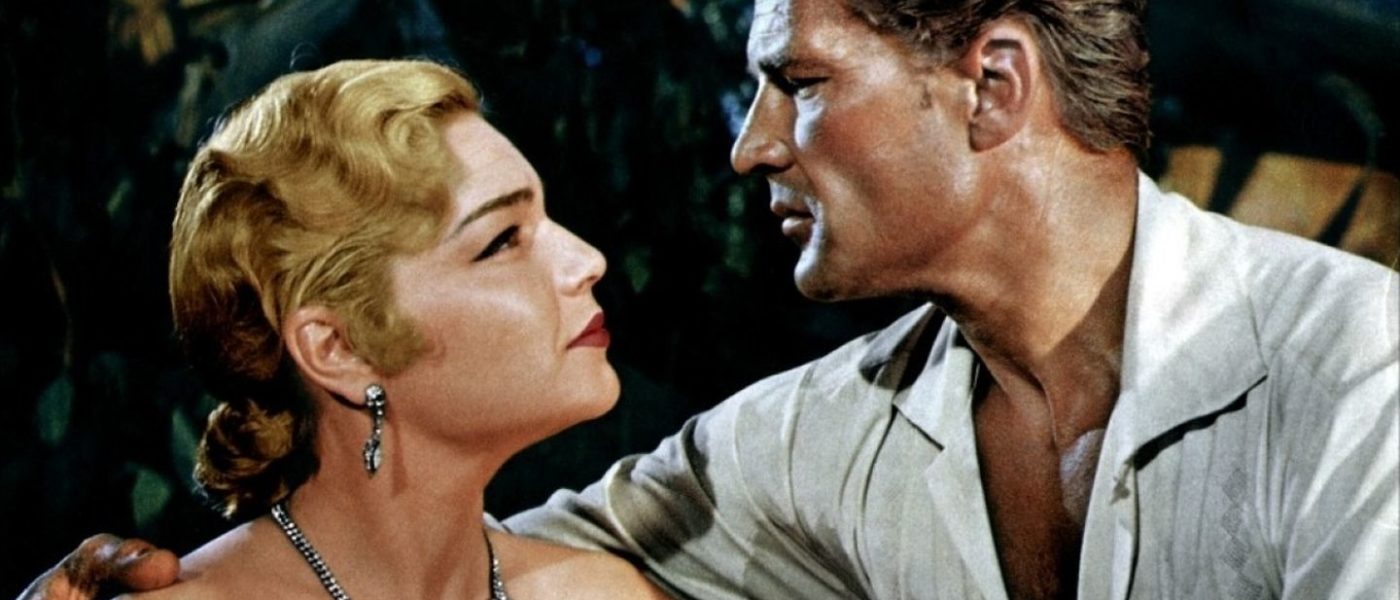Luis Buñuel Gets Lost in the Woods- in a Good Way.
DIRECTED BY LUIS BUÑUEL/FRENCH/1956
BLU-RAY STREET DATE: JULY 23, 2019/KINO CLASSICS

Long before there was LOST, there was Death in the Garden (La mort en ce jardin). The comparison may seem like a strange (even trite) one to make, much less lead with, but one needn’t wade to deeply into the thickets of the second half of the latter to notice certain similarities to the former.
A small band of mismatched survivors find themselves trapped and at the mercy of a dense, untamed jungle. Eventually they come upon a crashed airliner, physically ripped in half. This following a prolonged period of unintentionally desperately having gone around in circles, the jet’s contents both ensure survival- and awaken a kind of useless, material greed. (What good do priceless jewels do in an inhospitable jungle? Ask that his-and-hers conniving jewel-thief couple Nikki and Paulo from the third season of LOST; they can still be found resting in their premature mid-season grave). Don’t look for any smoke monsters, polar bears or underground survival bunkers. It’s all about the tense vibe of human uncertainty in a tremendously mysterious unraveling natural world. This is strangely on point.
As stated in passing earlier, the jungle survival scenario is merely the second half of Death in the Garden. Legendary filmmaker Luis Buñuel, by this point enshrined on the Mount Rushmore of Modern Surrealism (recall his 1929 Dali collaboration Un Chien Andalou), plays this film curiously straight. The dead-center of a mid-1950s three-film Spanish/French co-financing package, Death in the Garden (adapted by a novel by José-André Lacour) is often overlooked when it comes to the director’s tremendous artistic legacy. And dare I say, understandably so… at least, as far as the particular “art film” niche that Buñuel is most known for. Buñuel would make a turn back into surrealism in the later decades of his life, albeit often infused with various politics. (1974’s Phantom of Liberty; 1972’s The Discreet Charm of the Bourgeoisie) Death in the Garden certainly has its share of proletariat politics. Any surrealistic flourishes can be counted on one hand. All are relatively minor… and take place during that LOST-like second half.

The film is indicative of Buñuel’s standing as both a lifelong restless artist and devotee to classic cinema. The essay by Peter Tonguette in the full-color booklet that comes packaged inside the case of Kino Classics’ fine Blu-ray release prefers to stretch this observation to the point of connecting the two poles in a more defined way. An interesting observation, to be sure, though not one that occurred to this critic upon initial viewing of Death in the Garden. It is, as Tonguette aptly points out, first and foremost an adventure film.
It begins with a governmental seizing of a local diamond mine in a humble Brazilian village. That quickly gives way to worker unrest and violent uprising. Tan-uniformed guards aligned in formation fire on the encroaching workers. The workers retaliate by firing fatal pistol shots into the attackers’ point-blank guts. It’s a hostile scene realized with the precision of a John Farrow or Raoul Walsh. (To blatantly lift Tonguette’s astute examples).
Amid the increasing strife of the village, five separate characters, each more different from the next, ultimately come together to make a break for it. A blindsided priest (Michel Piccoli), an increasingly deranged older man (Charles Vanel) and his young mute daughter (Michéle Girardon), a headstrong prostitute (Simone Signoret), and an uneasy man of action (Georges Marchal) all wind up thrust together in the dark woods. Or as the title poetically puts it, “the garden”. The trouble is, this garden has already yielded far too much in way of growth; none of it asked for or wanted. Likewise, the struggles for different diamonds that bookend this film are, in and of themselves not particularly useful in their discovery contexts.

In the aforementioned essay, Death in the Garden is referred to as both poetry and prose. In that sense, Buñuel’s core actors are a compelling blend of those with great presence and those of great performance. (The former category occupied by Girardon and Piccoli, the latter by Varnel and Signoret). In the end, it’s a winning enough ensemble, even as one might guess, most of the characters themselves don’t exactly prevail. Curiously, many would go on or continue the then current paths to a certain vitality in the French cinema. That goes a long way to affirm this as a French film, which is debatable, considering the linage of its financing and its director.
In the Kino Classic’s Blu-ray bonus features, the great film critic Tony Rayns is on hand to discuss Buñuel at length via a single-shot video interview. While Rayns is a great get, the use of any B-roll at all during his thirty-plus minute talk would help to break up the inevitable monotony. On the audio side, film critic Samm Deighan gives an impressively in-depth and quite listenable commentary over the film itself. Being that she also covers Buñuel in detail well beyond this specific film (though she does a great job of always getting back to it), it’s not a stretch to imagine Deighan giving this talk not over Death in the Garden, but in a lecture hall with a good PowerPoint presentation.
Though any and all Buñuel films should be available in high definition, Death in the Garden isn’t an entry that one would label “required viewing”. That is, unless you’re like me, a still lingering fan of the television series LOST… in that case, this film is elevated to something of a must-see, if only for its obvious similarities. These characters, like the fated passengers of Oceanic Flight 815, live in a world where righteousness and evil seem very far apart. But, as Buñuel might agree, that is not the real world.


